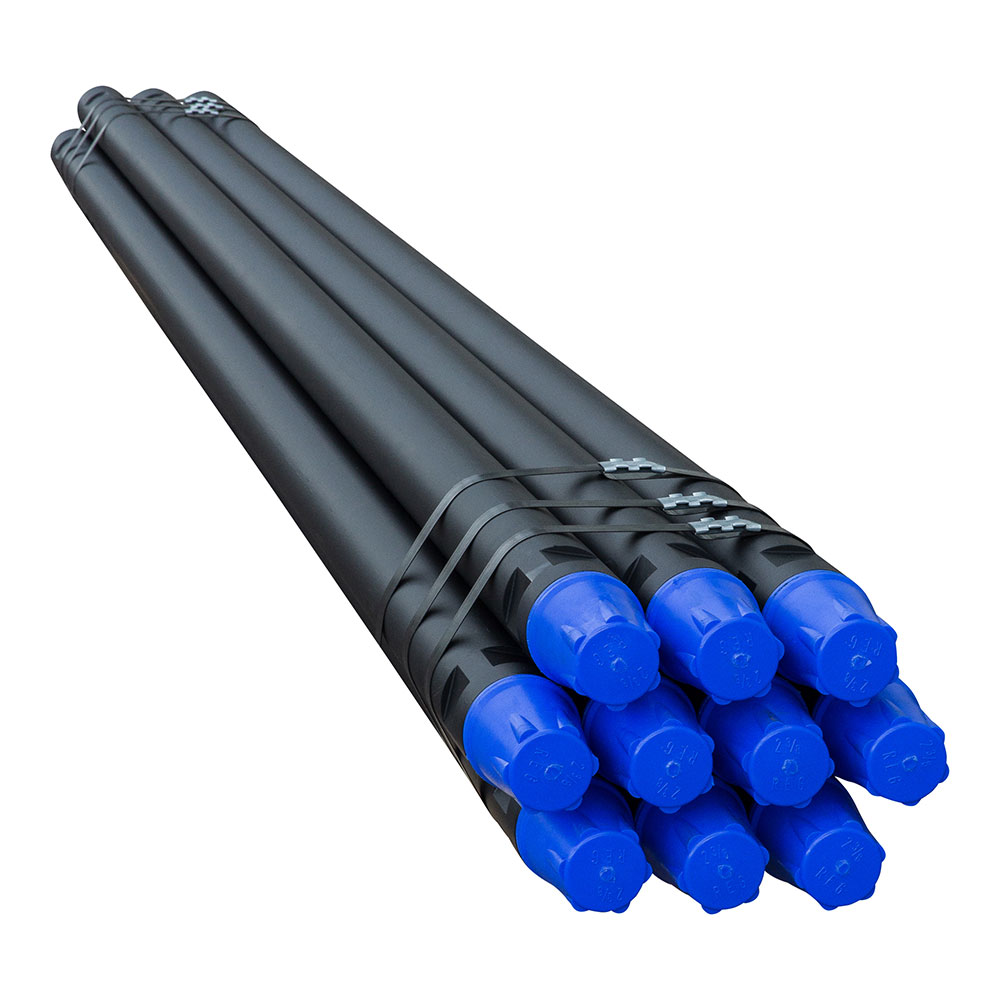Fast and Reliable Results
We do not always know a lot about what is hidden in the bedrock beneath our feet. There is therefore a lot we can learn and using specialist methods we can improve our knowledge significantly. For example, with RC drilling (reversed circulation) you can find out if the bedrock is strong enough to support construction or if you can extract materials from it.
RC drilling is a method used in exploration drilling. It helps you gain fast and reliable results about what is hidden down there in the bedrock. The method makes use of both hammer and rotation movements.
The method works by using compressed air to extract rock fragments, known as drill cuttings, which can then be analyzed. To explain the method in another way: the RC pipe comprises an inner and outer pipe. Air is blown between the walls of the inner and outer pipes down to the hammer where the air forces the cuttings back up through the center of the inner pipe: this means that cuttings are not mixed from different layers. Instead, you get an exact answer as to what the rock is made of at each level.
This technique is used for depths down to 600 meters. Samples are taken continuously during drilling, with around 12% of the cuttings going for analysis.
We do not always know a lot about what is hidden in the bedrock beneath our feet. There is therefore a lot we can learn and using specialist methods we can improve our knowledge significantly. For example, with RC drilling (reversed circulation) you can find out if the bedrock is strong enough to support construction or if you can extract materials from it.
RC drilling is a method used in exploration drilling. It helps you gain fast and reliable results about what is hidden down there in the bedrock. The method makes use of both hammer and rotation movements.
The method works by using compressed air to extract rock fragments, known as drill cuttings, which can then be analyzed. To explain the method in another way: the RC pipe comprises an inner and outer pipe. Air is blown between the walls of the inner and outer pipes down to the hammer where the air forces the cuttings back up through the center of the inner pipe: this means that cuttings are not mixed from different layers. Instead, you get an exact answer as to what the rock is made of at each level.
This technique is used for depths down to 600 meters. Samples are taken continuously during drilling, with around 12% of the cuttings going for analysis.

